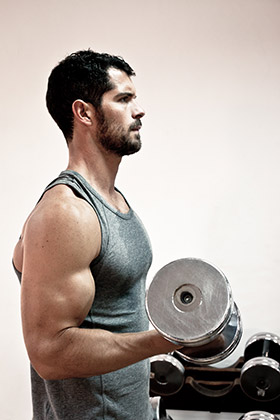 Just in case you haven’t learned this (or maybe you need a reminder), rest is essential to your workout routine. You need rest days between workouts, and rest between sets.
Just in case you haven’t learned this (or maybe you need a reminder), rest is essential to your workout routine. You need rest days between workouts, and rest between sets.
But while it’s easy to remember to rest your muscle groups for a day before training again, it’s not so easy to know how much rest between sets is best. Here’s a guide.
For Beginners
Whatever your goals for exercise are (build endurance, change body composition, get stronger, etc.) your ideal rest between sets is determined largely by how you feel and your current fitness level.
If you’re a beginner, you might be starting with more rest now than you will eventually use in the future. That’s okay. You need to gauge your efforts by paying close attention to your results and reactions as you work out.
When you’re new to strength training, rushing too quickly between sets can lead to improper form and increase your chance of injury. When the workout is challenging, you might feel nauseous or lightheaded without enough rest between sets.
So start with what feels right, and work your way up or down from there over time. For your first couple months of your routine, work at a deliberate pace and concentrate on building familiarity and safety into your workouts. Then you can move on to typical guidelines according to your goals, like those from the National Strength and Conditioning Association (NSCA), as listed below.
For Heavy Lifters
You might have heard this general rule of thumb: the heavier the weight, the longer the rest. That’s a good saying: for serious strength (or power) training with heavy weights, it’s smart to allow ample recovery between sets.
When you’re lifting heavy weights, your sets tend to be shorter—10 or fewer reps. A lot happens in response to this kind of training, including muscle fiber activation, mechanical damage and hormonal responses to repair and strengthen.
So it’s best to allow time for your body systems’ energy to renew before you place more demands with the next challenge. Two – five minutes of rest between sets is recommended by the NSCA.
For General Fitness
If your main concern is simply keeping up with a regular routine to stay youthful, get in shape, have more energy, and build muscle tone, then once you know your weight training movements, you’ll want to keep your rest periods on the short side.
A simple guideline for working toward general fitness is to keep moving throughout your workout. This is a circuit training approach that will add to general conditioning and overall fitness.
This kind of brief rest really only occurs to take a few breaths, or switch out your weights, or move to the next machine. It’s 30 seconds or less between sets according to the NSCA. At that pace, you’ll balance calorie burning with catching your breath and physical recovery between longer, but typically lighter, sets.

For Sculpting Big Muscles
When you want to increase muscle size above all other goals (the technical term is “hypertrophy” which is a goal of body builders, more than actual power or strength), the sweet spot for rest between sets is one minute.
Waiting a minute allows the right combination of responses to take place: there’s a certain level of stress and metabolic response that will maximize the potential for muscle growth, without diminishing potential to perform the next set well enough to cause gains. Recovery begins to prepare your muscles for another challenge, but because you don’t rest longer, as if between more demanding/shorter sets, your nervous system gets a little less time to focus on building strength.
Instead, there’s more focus on systems that cause actual size increases in the fibers. In response to a one minute rest, then starting the next set, growth hormones begin circulating–one of the physiological keys to sculpting big muscles.


